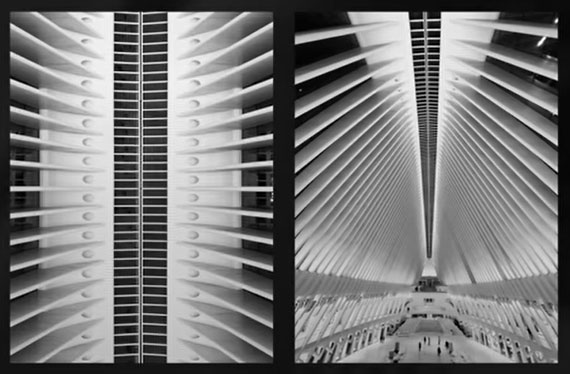Urban photographer Clifford Pickett has taken us on a visual journey to The Oculus in New York City in this recent video, delving into the art of symmetry in architectural photography. Pickett’s insights on this powerful compositional technique shed light on how photographers can take stunning photos by observing and manipulating symmetry. Here are the most important takeaways:

According to Pickett, symmetry is a fundamental design principle, especially prominent in architectural structures like The Oculus. Its prevalence and effect are undeniable, often leading to impactful photos that can captivate viewers.
Positioning Matters
To maintain and leverage symmetry effectively, Pickett recommends standing directly in the middle of the subject. By aligning oneself with the center of the architectural structure, the photographer can effortlessly capture the inherent symmetry, creating a balanced and appealing image.
Black and White: Amplifying Design
Pickett’s go-to setting for working with symmetry is black and white mode. Removing color from the equation shifts the focus onto the design elements of the photograph. It strips the scene down to its raw forms, lines, and shapes, allowing the symmetry to take center stage. This choice allows for a cleaner image, less distracted by the inherent nuances of color.
Exploiting the Crosshairs
Pickett suggests exploiting the crosshairs feature available in many camera apps. This tool helps in aligning symmetry when pointing the camera straight up or down. It assists in achieving a precise on-axis shot, making it easier to capture symmetry in the vertical dimension.
The Power of Dynamic Diagonals
Rotating the camera slightly can introduce a dynamic diagonal into an otherwise symmetrical scene. According to Pickett, a diagonal from bottom left to top right adds energy to the image, creating a more engaging composition. This technique elevates the concept of symmetry by incorporating an additional layer of complexity to the photograph.
Lens Switching for Expanded Perspective
To capture a more expansive photo, Pickett recommends switching to a wider lens, such as the 0.5x. This method stretches out the space, giving an impression of a larger expanse and adding impact to the image. By modifying the lens, you can manipulate the presentation of symmetry, providing a new perspective on a familiar scene.
Pickett’s exploration of symmetry in architectural photography demonstrates the profound impact this design principle can have on an image. His strategic use of positioning, black and white mode, crosshairs, dynamic diagonals, and lens switching shows how photographers can amplify the power of symmetry to create striking images. By embracing and manipulating symmetry, we can truly appreciate the beauty inherent in architectural design and produce more captivating photographs.
For further training: The Urban iPhone Photography Course at 80% Off
Like This Article?
Don't Miss The Next One!
Join over 100,000 photographers of all experience levels who receive our free photography tips and articles to stay current:







Leave a Reply